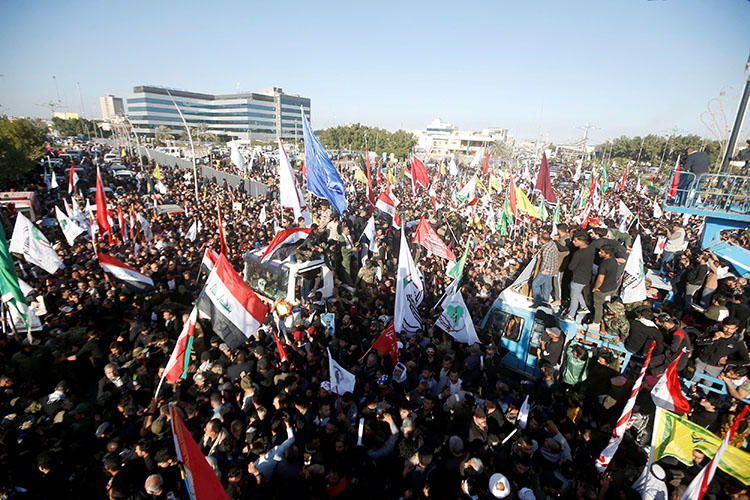In wake of the January 3, 2020, U.S. airstrike that killed Iranian Gen. Qassem Soleimani and Iraqi militia leader Abu Mahdi al-Mohandis, pro-Iranian militias have warned that “all retaliation options are on the table,” as reported by The Independent.
According to CPJ research, pro-Iran militias, including those known as the Popular Mobilization Forces (PMF), have previously targeted journalists for kidnapping. In the days just prior to the assassination of Gen. Soleimani — as tensions were already rising between the U.S. and Iran – the pro-Iran militia Kataeb Hezbollah was involved in the abduction of two French journalists, Kurdistan 24 reported on January 2. They were released after a day.
Journalists planning to cover events in Iraq should be aware of the potential of attack from anti- Western elements. U.S. passport holders are at high risk. Protests and crowd situations are particularly dangerous.
The militia have also carried out attacks on Baghdad-based television channels, according to the Fair Observer, while in November, a mortar hit a Baghdad production business that offers services to satellite channels like the BBC and Al-Araby, according to Al-Monitor. According to the report, pro-Iran forces likely targeted the mortar at Al-Araby.
All primary airports – including Baghdad, Basra International (BSR, Basra governorate) and Najaf (NJF, Najaf governorate) – are operational. However, four airlines (Gulf Air, Royal Jordanian, Flynas and Nasjet) have suspended flights to Baghdad, according to aviation publications.
Journalists should observe the following safety precautions:
- Engage a local fixer and ensure that accreditation and necessary permits are all in place. There are frequent checkpoints and correct paperwork is essential.
- Maintain a low profile when in transit. It is sensible to have a second vehicle as backup in case of breakdown.
- When possible, have security with you at all times when operating in Baghdad.
- Have personal protective equipment (PPE) on hand at all times.
- Use any satellite or communications equipment with discretion at all times.
- Select accommodation with armed security, vehicle access control and checks.
- If Western, it is sensible to avoid reporting from crowd situations or demonstrations. Emotions are high and there is potential for an arbitrary altercation or attack.
- When covering crowd situations, maintain situational awareness at all times, have PPE, and stay in close proximity to hard cover. Always have an emergency route planned. Stay to the periphery as there is always a potential of stampede. Minimize your time as much as possible.
- Ensure all sensitive data and messages are regularly wiped from your devices.
- Put in place a sensible communication schedule, with clear actions for failure to check-in. If the risk is high, journalists should consider the tracking options available.
- Have in place emergency protocols in case of injury, arrest or kidnapping. Identify the best people for your emergency contact to reach out to–for example your fixer, local journalists who may be able to help, and/or your embassy.
- Leave passport or other identification details, insurance policy numbers, medical history, social media passwords and blood type with your emergency contact.
CPJ’s online Safety Kit provides journalists and newsrooms with basic safety information on physical, digital, and psychological safety resources and tools, including on covering civil unrest and elections.
